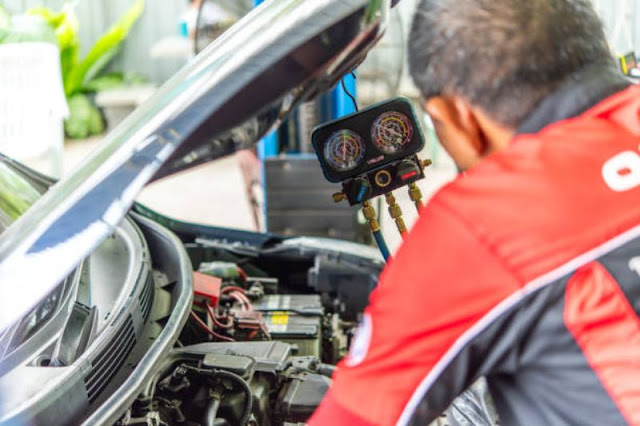Featured
- Get link
- X
- Other Apps
Addressing Range Anxiety: The Evolution of Electric Vehicle Range
Addressing Range Anxiety: The Evolution of Electric Vehicle Range
Electric vehicles (EVs) have gained considerable popularity
in recent years due to their environmental benefits and cost-effective
operation. However, one common concern among potential EV buyers is "range
anxiety." Range anxiety refers to the fear or uncertainty of running out
of battery power before reaching a destination or a charging station. In this
article, we will explore the concept of range anxiety, discuss the factors
contributing to it, and highlight the strategies and technologies that address
these concerns, ultimately making EVs more practical and accessible.
- Understanding
Range Anxiety
Range anxiety is a psychological barrier that some consumers
face when considering the purchase of an electric vehicle. It stems from
concerns about the driving range of EVs and the availability of charging
infrastructure. While the driving range of electric vehicles has improved
significantly over the years, range anxiety still lingers as a perceived
limitation.
- Factors
Contributing to Range Anxiety
Several factors contribute to range anxiety:
a. Limited Range Perception: Consumers often compare the
driving range of EVs to that of traditional gasoline or diesel vehicles. EVs
typically have a shorter range, leading to concerns about long trips and the
need for frequent charging stops.
b. Charging Infrastructure: The availability and
accessibility of charging infrastructure play a crucial role in mitigating
range anxiety. In some regions, charging stations may be less prevalent or not
as conveniently located as gas stations.
c. Charging Speed: Charging times can vary significantly
depending on the type of charger used. Slow charging can exacerbate range
anxiety, especially for drivers on long journeys.
d. Weather Conditions: Extreme weather conditions, such as
extreme cold or heat, can affect battery performance and reduce driving range.
e. Battery Degradation: Over time, the capacity of a
lithium-ion battery can degrade, resulting in reduced driving range. This
concerns some consumers who worry about the long-term viability of their EV.
- Strategies
to Address Range Anxiety
To alleviate range anxiety and encourage the adoption of
electric vehicles, automakers and governments have implemented various
strategies:
a. Improved Battery Technology: Advances in battery
technology have led to increased energy density and longer driving ranges.
Newer EV models are equipped with more efficient batteries that offer
competitive ranges.
b. Expanding Charging Infrastructure: Governments and
private entities are investing in the expansion of charging networks, making it
easier for EV owners to find and access charging stations.
c. Fast-Charging Solutions: Fast-charging stations, also
known as DC fast chargers, provide rapid charging, reducing the time required
for recharging. These stations are strategically located along major highways
to support long-distance travel.
d. Home Charging: Encouraging EV owners to install home
charging stations makes it convenient to charge overnight, ensuring a full
battery in the morning.
e. Public Awareness: Educating consumers about EV
capabilities, charging options, and the convenience of home charging can help
dispel range anxiety.
f. Improved Range Estimation: Modern EVs are equipped with
advanced range estimation systems that provide accurate predictions based on
factors like driving habits, weather, and traffic conditions.
g. Battery Management Systems: Battery management systems in
EVs monitor and optimize battery performance, extending battery life and
driving range.
h. Incentives and Rebates: Governments offer financial
incentives, tax credits, and rebates to incentivize EV adoption, making them
more affordable for consumers.
- Electric
Vehicle Models with Impressive Ranges
Many electric vehicle models now offer ranges that can rival
or surpass those of traditional gasoline vehicles. For instance:
a. Tesla Model S: The Tesla Model S Long Range Plus offers a
driving range of over 370 miles on a single charge.
b. Ford Mustang Mach-E: The Mustang Mach-E boasts a range of
up to 305 miles, making it a competitive option in the EV market.
c. Chevrolet Bolt EV: The Chevrolet Bolt EV offers an
estimated range of 259 miles, providing an affordable long-range option.
d. Hyundai Kona Electric: With a range of approximately 258
miles, the Hyundai Kona Electric is a versatile and practical EV.
e. Nissan LEAF Plus: The LEAF Plus variant offers a range of
226 miles, making it an accessible option for everyday commuting.
- Overcoming
Range Anxiety in Real Life
For most consumers, addressing range anxiety is a matter of
practicality. Here are some strategies that real-world EV owners use to
overcome range anxiety:
a. Route Planning: Plan routes in advance, taking into account
the locations of charging stations along the way. This ensures peace of mind
during long journeys.
b. Home Charging: Regularly charging at home overnight
ensures that your EV starts each day with a full battery, reducing the need for
frequent public charging.
c. Workplace Charging: Some employers provide charging
stations at the workplace, allowing employees to charge their EVs during the
workday.
d. Public Charging Etiquette: Be considerate when using
public charging stations, and avoid leaving your EV parked at a charging
station once it's fully charged to allow others to use it.
e. Mobile Apps and Navigation: Utilize mobile apps and
navigation systems that provide real-time information about nearby charging
stations, including availability and pricing.
- Conclusion
Range anxiety remains a valid concern for some consumers
considering electric vehicles, but significant progress has been made to
address these concerns. Advances in battery technology, expanding charging
infrastructure, and improved range estimation systems have substantially
improved the viability of EVs for everyday use.
Moreover, many modern electric vehicle models offer impressive ranges that make them practical alternatives to traditional internal combustion engine vehicles. As governments and automakers continue to invest in EV adoption and charging infrastructure, range anxiety is becoming less of a barrier to entry. Ultimately, the transition to electric mobility is crucial in reducing greenhouse gas emissions and achieving a more sustainable transportation ecosystem.
- Get link
- X
- Other Apps
Popular Posts
How robots help design our beauty products
- Get link
- X
- Other Apps



Comments
Post a Comment